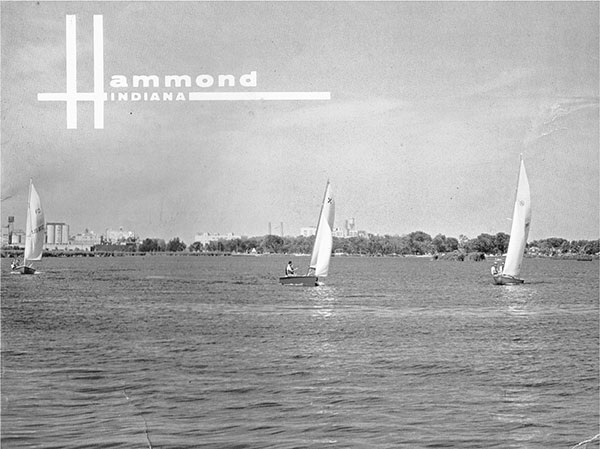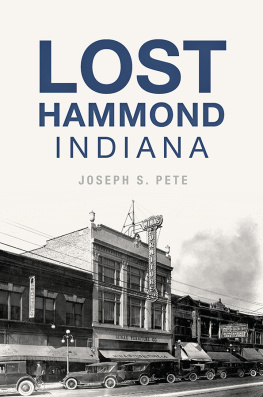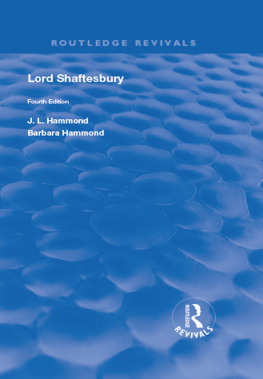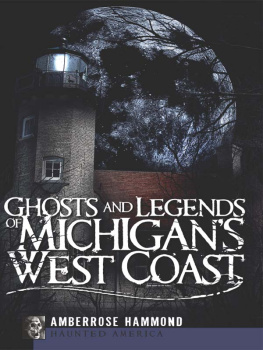


Published by The History Press
Charleston, SC
www.historypress.com
Copyright 2020 by Joseph S. Pete
All rights reserved
First published 2020
E-book edition 2020
ISBN 978.1.43966.964.8
Library of Congress Control Number: 2019956022
print edition ISBN 978.1.46714.286.1
Notice: The information in this book is true and complete to the best of our knowledge. It is offered without guarantee on the part of the author or The History Press. The author and The History Press disclaim all liability in connection with the use of this book.
All rights reserved. No part of this book may be reproduced or transmitted in any form whatsoever without prior written permission from the publisher except in the case of brief quotations embodied in critical articles and reviews.
To my wife, Meredith: my sun, my moon and my starry, scintillating sky.
CONTENTS
ACKNOWLEDGEMENTS
The author would like to thank the assistance of the Hammond Public Librarys Suzanne G. Long Local History Room, the Hammond Historical Society, the Calumet Regional Archives at Indiana University Northwest, the Hammond High School Class of 1959 history website, the archives of The Times of Northwest Indiana and the Post-Tribune, his parents and family, Mr. Klora and other teachers, iced coffee, LCD Soundsystems Losing My Edge and other songs he played on repeat while writing, the there aint no laws while youre drinking Claws guy and the secret splendor that lurks within everyone, however well hidden.
INTRODUCTION
Northwest Indiana is one of the most heavily industrialized places on Earth with all its steel mills, oil refineries and ports, and Hammond is one of the biggest hubs of industry there. Though overshadowed by its next-door neighbor Chicago and perhaps not as well known as the adjacent Steel City, Gary, Indiana, Hammond has given the wider world soap, books, tanks, gasoline, corn syrup, horse food, processed hogs and lots and lots of hearty midwestern beef. The city has made trains, chains, cigars, shirts, candy, nuts, player pianos, commercial wallpaper, concrete roof slabs, gutters, boilers, potato digging devices, screws and many steel products. Needless to say, Hammond is a city that makes stuff. Its a city of hulking factories and rumbling railroads that takes pride in its industriousness. Its suffered from some of the corresponding environmental problems and even had a river catch fire like the Cuyahoga River in Cleveland. But theres far more to Hammond than just manufacturing and blue-collar workers. Hammond was home to one of the first National Football League teams and early National Basketball Association teams. It gestated A Christmas Story author Jean Shepherd, the legendary professional wrestler Terry Funk and Sears co-founder Alvah Curtis Roebuck. Once a major retail and entertainment hub, Hammond had many treasured landmarks like the Phil Smidts perch palace, Goldblatts, the E.C. Minas Department Store, the Paramount and Parthenon theaters, the Woodmar Mall, Maduras Danceland and all the bright lights and beckoning attractions at Five Points. While the marquee lights have dimmed at the grand movie palaces and the elegant department stores have faded into fond memories, the city remains home to universities, fine dining, casino gaming, festivals, massive outdoor concerts, beaches and some magnificent pockets of nature like Wolf Lake, which Mens Journal named the best place in the country for windsurfing.

As this vintage promotional brochure shows, Hammond is home to many recreational activities like sailing on Wolf Lake. Calumet Regional Archives.
In 1847, immigrants from Germany, East Prussia and Wales settled on the southern shore of Lake Michigan near what is now Hammond. They quickly discovered the land was unsuitable for cash crops like corn, wheat and soybeans that dominated the largely agricultural landscape downstate, though their gardens still sprouted blackberries, strawberries, huckleberries and other sweet fruit. The German language was spoken around town in the citys early days. The first settlers farmed, worked on railroads, guided people to Chicago and hunted, bagging as many as one hundred ducks in a day. The nineteenth-century historian Alfred Andreas described the city as an unbroken forest of heavy timber, but which has long since disappeared under the aggressive civilization of the white mans ax. The Region was one of the last places to be settled in Indiana because it was so inhospitable. The area along the lakeshore of Lake Michigan was described by Andreas as a wilderness with swamps, marshes, quaking bogs, and invincible sandhills. During part of the year, the immense swamps between Lake Michigan and the Grand Calumet River and between the latter and the Little Calumet became seas, dammed by fallen timber and matted leaves, according to the Federal Writers Projects The Calumet Region Historical Guide. The guide continues: On the shore of Lake Michigan, sandhills some 200 feet high, with bases of 300 to 400 feet, offered no attraction to the pioneer home-seeker. Quaking bogs and tamarack swamps, around which the Indian routed his path, made other areas impenetrable to the inexperienced settlers. Ernst and Caroline Hohman established Hohmans Tavern and a toll bridge across the Calumet River near the state line in 1851. John Shedd, the second president and chairman of Marshall Fields and the namesake of the Shedd Aquarium, who owned a lot of property in the Hammond area, reportedly would chance it by crossing the ice in the winter so he would not have to pay the toll.
From the start, Hammond was the little brother to neighboring Chicago, the meatpacker of the world, which shaped its early development. George Hammond and Marcus Towle established a slaughterhouse and beef packaging plant just across the state line in Hammond in 1869. It was Hammonds first industrial enterprise, grew into a major supplier of meat across the Midwest and paved the way for Hammond to be incorporated as a city a few years later. The meatpacking plant was so prominent Hammond was first known as State Line Slaughterhouse, according to T.H. Balls A History of Northwestern Indiana from 18001900. It was not until a post office opened in the city that it was given the far less descriptive name of Hammond. The legend goes that George Hammonds brother Honest Tom Hammond had a coin flip with co-founder Towle; the winner would have the city named after his family, and the loser would get a main road named after his. Tom Hammond, of course, won. He went on to become mayor and was instrumental in bringing the W.B. Conkey bookbinding factory to town. But he was nowhere near as central to the citys development as his brother George, a Massachusetts native who started out making leather pocketbooks after dropping out of school at the age of ten and ended up working in different mattress factories. George Hammond spent most of his life in Detroit, where he established a meat market that grew into a large retail and wholesale meat store, but nonetheless made much of his fortune in the city southeast of Chicago on the shores of Lake Michigan that would eventually bear his name. His thirty-acre meatpacking operation at Hohman Avenue and Willow Court just north of downtown Hammond was the citys earliest economic engine, grew successful enough to have a sister facility in South Omaha, Nebraska, and eventually shut down after a fire in 1901 that left nearly two thousand workers out of a job.
Next page
















